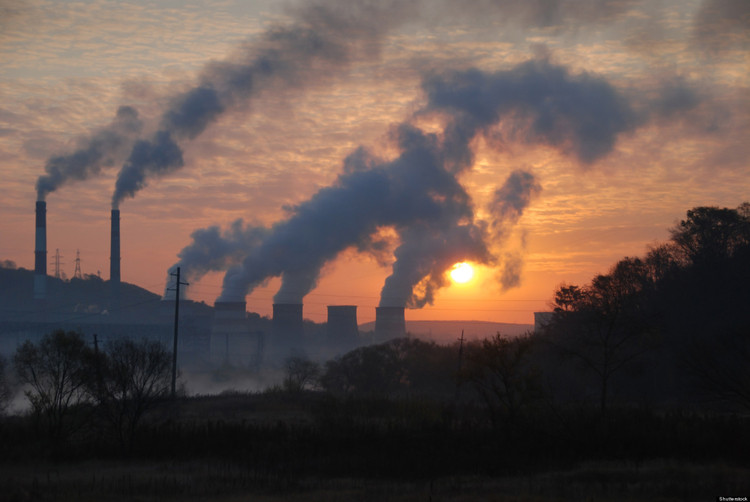
The Sunday Mail

Just ahead of the G20 summit that begins in Turkey today, two new reports paint intriguing – and very different – pictures of how the world’s largest economies are acting on global warming. From Climate Transparency comes a finding that “climate action by the G20 has reached a turning point, with per capita emissions falling in 11 members, and renewable energy growing strongly” in 15.
Moreover, its analysis concludes that “there are strong indications that total global energy-related carbon dioxide emissions have stopped rising in 2014, the first such reversal in annual emissions growth in the industrial era, aside from periods of serious economic crisis.”
G20 performance is significant because the roster of the 19 member nations plus the European Union are a close if not exact match with a list of the world’s largest producers of greenhouse gases.
Collectively the G20 – which contributes about 85 percent of the world’s Gross Domestic Product, conducts 80 percent of overall world trade and contains 64 percent of the world’s population – creates 74 percent of global green house gases.
Their Governments also provided, according to the other new analysis, subsidies for fossil-fuel production averaging $452 billion in 2013 and 2014 – or about four times the amount of production subsidies paid by all countries of the world to support expansion of renewable alternatives.
In 2009, the G20 leaders pledged to phase out “inefficient” fossil fuel subsidies. But a review of performance data by the Overseas Development Institute (ODI) and Oil Change International concludes that these were empty promises
Relying on the World Trade Organisation’s definitions of subsidy, the ODI analysis found:
◆ $78 billion in national subsidies delivered through direct spending and tax breaks.
◆ $88 billion in public finance from state-owned banks and financial institutions.
◆ $286 billion in investments by other state-owned business enterprises
Measuring policy results
According to Climate Action Tracker, a partnership of four research organisations, about 32 countries are responsible for about 80 percent of all global emissions.
Drawing on International Energy Agency data for 2007-2012, Climate Transparency found that per capita carbon emissions declined in the United States, Australia, Canada, Japan, Germany, Britain, South Africa, Italy, France and Mexico, as well as in the EU as a whole; they continued to increase in China and India – the most populous member nations – as well as in Saudi Arabia, South Korea, Russia, Argentina, Turkey, Brazil and Indonesia.
Where emissions are declining, Climate Transparency attributes the change to; “Renewable energy continuing its strong growth worldwide.
Costs have fallen sharply, and parity with traditional forms of energy is in sight, or already reached.
“Renewable energy sources are also helping to bring power to the millions of people who do not have access to electricity, where off grid renewable power can be installed faster and cheaper than a grid connection.
“Climate legislation has been introduced in many countries and targets have been strengthened over time. Increasingly, there is knowledge sharing and collaboration over policies to promote renewable power, energy efficiency and carbon pricing
Progress is not yet occurring fast enough to head off a global temperature rise above the 2° C danger mark, the report says; current per capita emissions worldwide average about 11 tonnes of carbon dioxide equivalent per year, and that number needs to fall into the one- to three-tonne range by 2050.
Following the money
Several countries have scaled up their pledges to reduce greenhouse gas emissions, but continued subsidies for fossil fuel production raise serious concerns about these pledges and could undermine the prospects for an ambitious climate deal.
As well as phasing out national subsidies, G20 governments have a tremendous opportunity to meet the climate challenge by shifting the investment of state-owned enterprises and public finance away from fossil fuel production, towards clean energy.
In the United States, the analysis counts “more than $20 billion in national fossil fuel production subsidies each year, despite calls from President Barack Obama to eliminate industry tax breaks.”
For comparison, it found $23 billion in direct subsidies by Russia, $9 billion by the UK, $5 billion by Australia and Brazil, and $3 billion in China.
However, additional payments by state-owned companies and banks often dwarfed those amounts with $50 billion for Russia, $42 billion for Brazil, and a whopping $77 billion for China.
In the aggregate, the report found that G20 nations provide $78 billion in national subsidies, $88 billion in public finance, and $286 billion in investment by state-owned enterprises to fossil-fuel producers.
One more discouraging snapshot is that in the coal sector alone producers in G20 member nations got almost twice as much public support as private investment – $19 billion versus $10 billion. – MinnPost.



